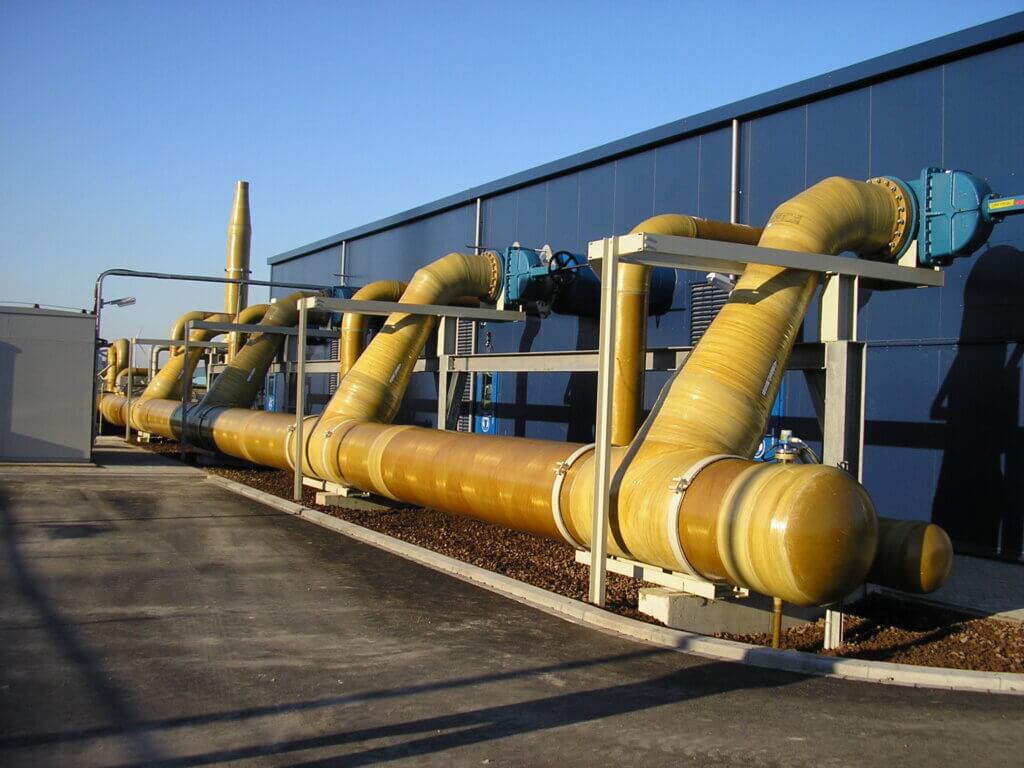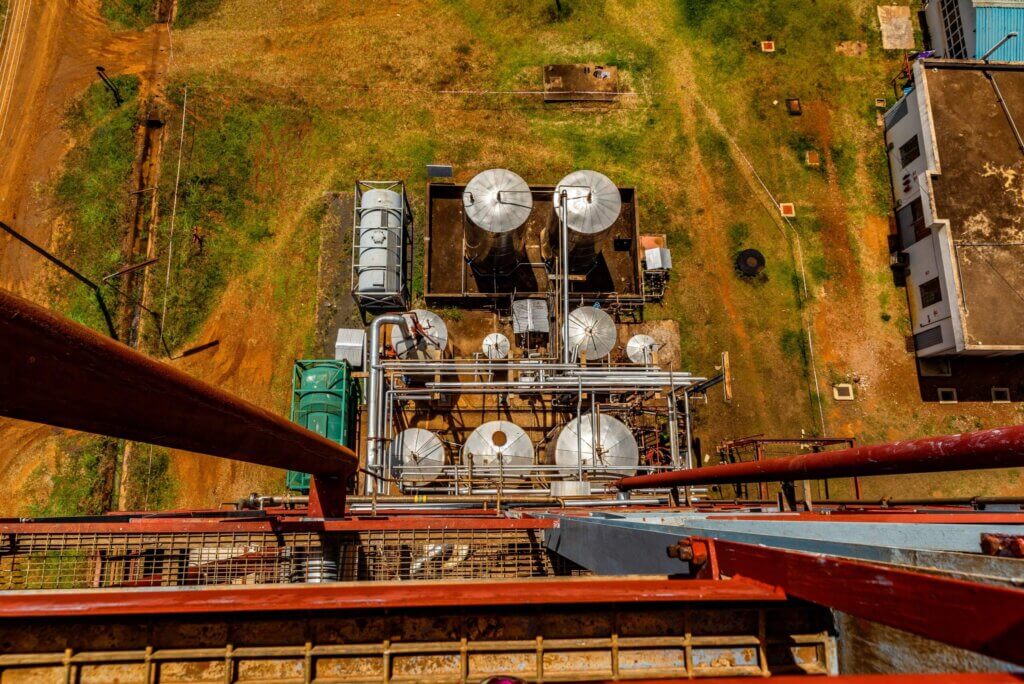Fiberglass Engineering
FRP (Fiber Reinforced Plastics) piping systems, unlike traditional systems, require specialized design, manufacturing, and installation due to their anisotropic properties. Dynaflow Research Group, has been involved in the development of FRP for pressurized applications since its founding in 1989.
As a founding member of the ISO14692 and DNV certification committees, DRG has contributed to many technical papers and industry codes. Our engineering services cover the entire project life-cycle, from feasibility studies to installation support. Renowned companies like Shell, BP, and BASF rely on our expertise for FRP systems. Our deep involvement in international standards ensures up-to-date, globally recognized solutions.

Fiberglass Expertise
Expert Fiberglass Piping Engineering and Design Solutions
DRG offers expert fiberglass piping analysis services, including stress, surge, and vibration analysis for both new and existing systems. Using advanced techniques, our team identifies risks and ensures compliance with ISO 14692 standards, a key benchmark for fiberglass piping systems.
Our fiberglass specialists provide clear insights and practical solutions, offering on-site assistance for installation, maintenance, and root cause analysis after failures. By addressing challenges specific to fiberglass-reinforced plastic (FRP) systems, we enhance the performance, durability, and safety of your fiberglass piping infrastructure, ensuring long-term reliability.
- Pipe Stress Analysis
- Buried Piping
- Surge Analysis
- Vibration Analysis

- Project Spec. Writing/Review
- FEED Design
- Technical Bid Evaluations
- Pipe Fabrication Inspections
- Material Lab Testing
- Engineering Review
- Installation Supervision/Review
- HAZOP Support
- Failures Investigation (Root Cause Analysis)
An optimized design in the early project stages is critical to preventing future operational issues in fiberglass piping systems. Our design support ensures durability and efficiency by selecting the right materials, optimizing pipe wall thickness, and ensuring proper support layouts.
Using advanced tools like Finite Element Analysis (FEA), we design fiberglass components—such as vessels, tanks, and piping systems—to withstand operational demands. This attention to detail minimizes costly delays, equipment failures, and unplanned downtime, ultimately reducing time and costs throughout the project’s lifecycle. DRG’s expertise in fiberglass-reinforced plastic (FRP) design ensures your systems meet the highest standards of safety and performance.
- FEA For Special Components
- Wall Thickness Design
- Pipe Support Design
- Testing & Q.C
- Design of non-piping components

Fiberglass Applications
Fiberglass Engineering Project Example
Fiberglass material is an ideal candidate for piping systems used for chemical service. FRP pipe can be resistant to a wide range of chemicals. The resistance of FRP to chemical deterioration however relies primarily on the resin used in the liner.
The selection of the fiberglass system for chemical service depends on the fluid to be transported and its temperature. Both the resin type and glass type determine the specific chemical compatibility of the piping system. For instance, caustic service requires another resin and glass fiber type than acid service.

For the application of FRP in the casing system for geothermal applications a European project has been launched. This project consists of a consortium of eight geothermal expert partners, including Dynaflow Research Group, whose aim is to develop a new glass fiber-reinforced epoxy casing system for geothermal application, short GRE GEO. This will allow for the casing system to be used in new installations as well as utilized for workover for old wells. Furthermore, the project includes the guidelines and tools for the design, qualification, and installation of the GRE piping system.
Fiberglass’ advantages particularly shine in the offshore industry where fiberglass products are increasingly used over more traditional materials like aluminum and steel.
An important reason why FRP is so valuable in offshore applications is its corrosion resistance. FRP is also resistant to UV rays or chemicals which makes it an ideal candidate for the demanding conditions offshore.
Another key benefit of FRP is its lightweight compared to steel. This is especially useful in offshore applications where materials need to be transported to remote locations.

At their destination, the light weight helps to limit the total mass of the installation and thereby the load on the offshore platform. FRP materials are also high-strength and have a higher strength-to-weight ratio than steel.
The resistant nature of FRP piping reduces maintenance costs and related downtime. This, together with its high strength-to-weight ratio limiting transport costs and offshore platform loads, makes FRP, particularly for the offshore industry, a cost-effective solution.
Fiberglass material is an ideal candidate for piping systems used for chemical service. FRP pipe can be resistant to a wide range of chemicals. The resistance of FRP to chemical deterioration however relies primarily on the resin used in the liner.
The selection of the fiberglass system for chemical service depends on the fluid to be transported and its temperature. Both the resin type and glass type determine the specific chemical compatibility of the piping system. For instance, caustic service requires another resin and glass fiber type than acid service.

For severe chemical fluids like for example sodium-hypochlorite or high-concentration hydrochloric acid lines (desalination/demineralization plants) dual laminated systems with a corrosion-resistant liner are often used.
For every type of chemical service, an optimum combination of resin and glass reinforcement exists. The design and qualification of such systems deviate from that of “standard” FRP products and therefore need special attention. Also, the chemical compatibility and type of seal/gasket need to be selected carefully.
